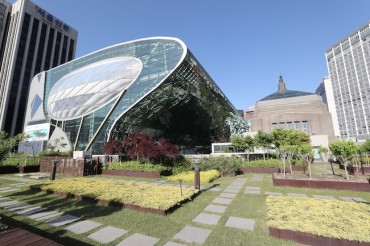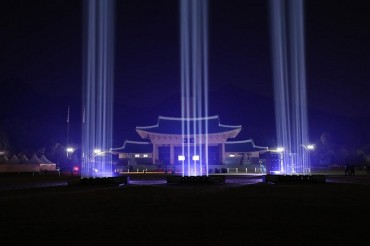
This file photo taken in August 2019 shows a Seoul citizen walking in a public park in southern Seoul. (Yonhap)
SEOUL, Feb. 19 (Korea Bizwire) — Global climate change has increased the frequency of abnormal weather conditions, such as heat waves, tropical nights and typhoons, and lengthened the duration of cold waves and droughts on the Korean Peninsula over the past decade, a government report said Wednesday.
According to the report published jointly by the Korea Meteorological Administration and 23 other government agencies, South Korea’s annual average temperatures and the number of days of heat wave steadily rose in the 2010s.
For instance, the number of heat wave days — days on which the daily high temperature is above 33 C — increased to an annual average of 15 in the 2010s from an annual average of 10 between 2000 and 2009, the report said.
In the period from 2010 to 2019, unusual weather phenomena, including heat waves, tropical nights and typhoons, persistently hit the peninsula, with heat waves occurring every year, it noted.
In addition, the nation was frequently gripped by long and severe cold waves in the early 2010s, as global warming weakened the jet stream and cold air from the Arctic descended towards the peninsula. The late 2010s also saw long spells of drought.
The report also noted last year’s annual average temperature was 13.5 C — higher than the 30-year average of 12.5 C and the second highest figure since relevant record keeping began in 1973.
The number of heat wave days was 13.3 in 2019, compared with 31.4 in 2018, while the number of tropical nights fell from 17.7 to 10.5. A tropical night is defined by the nighttime low staying above 25 C.
Notably, the Korean Peninsula was hit by a record-tying seven typhoons last year.
Typhoons Lingling and Mitag claimed 28 lives and caused 201.1 billion won (US$170 million) in property damage.
Mitag dumped 104.5 millimeters of rain per hour in Uljin in southeastern South Korea, the highest hourly rainfall since meteorological observations began here.
(Yonhap)






